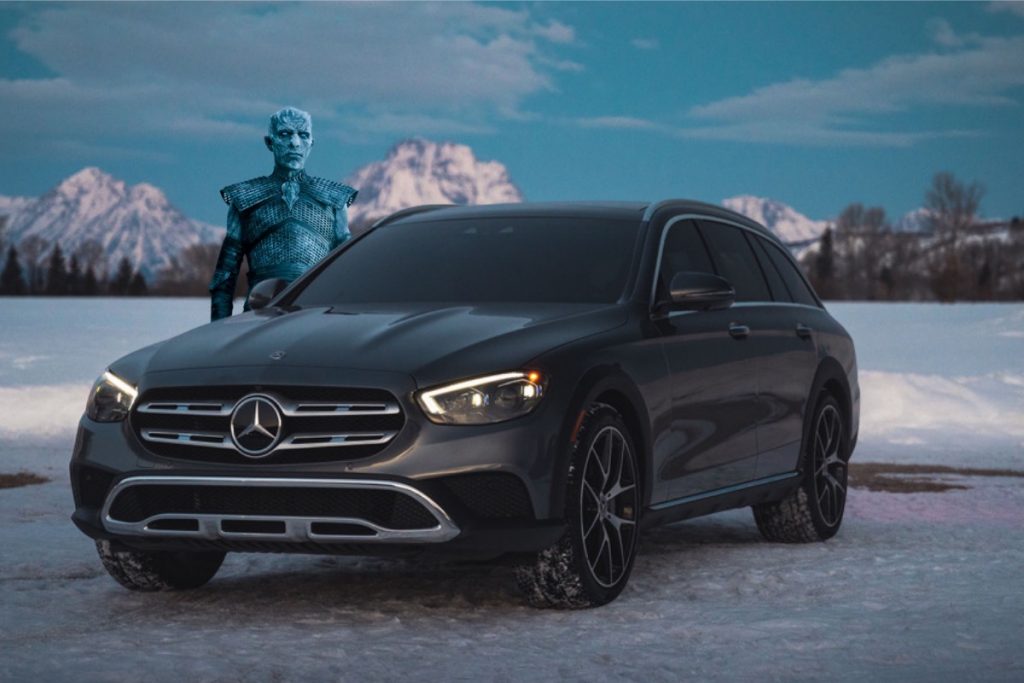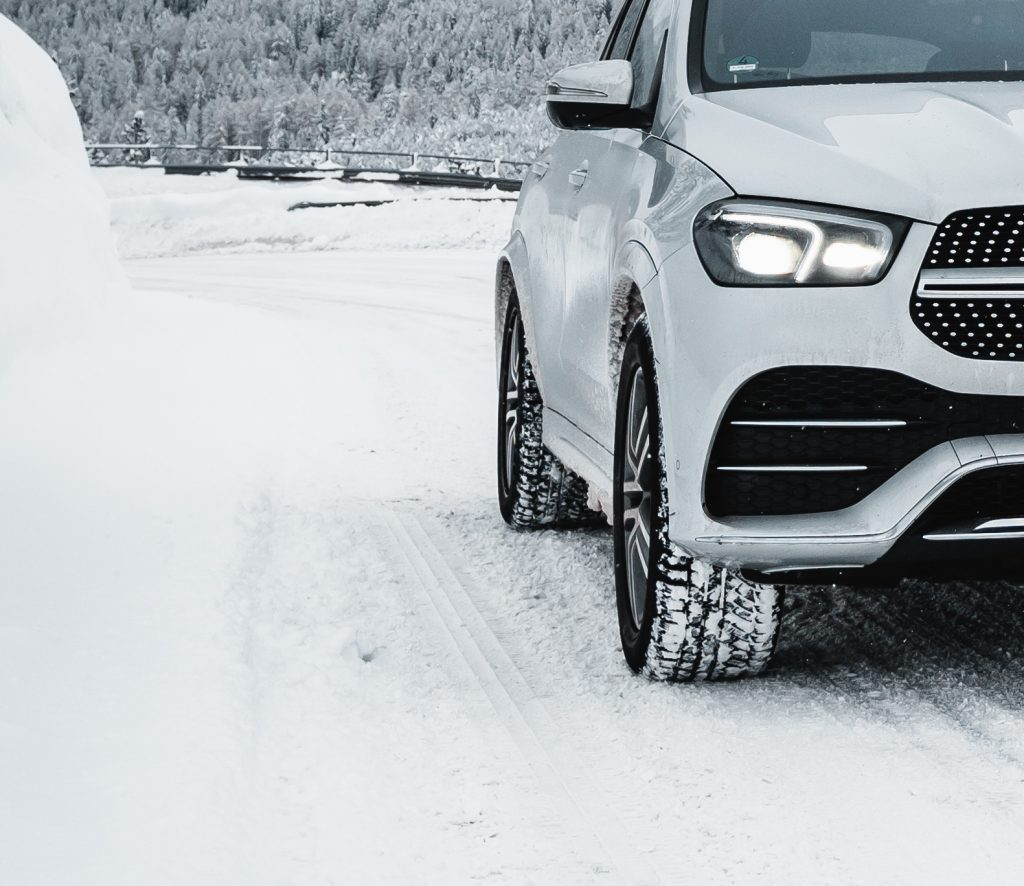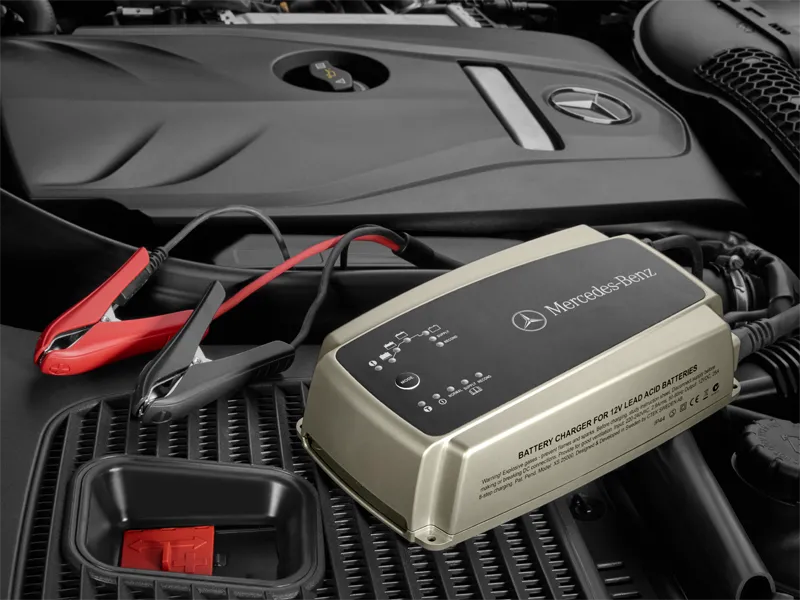How to Winterize Your Mercedes-Benz for Colorado Snow

Colorado is famous for its winters, which typically begin well before the official start of the season. By October 31, temperatures drop and the first snow has fallen.
While the weather can be more extreme in mountain towns, the snow in the Metro area tends to be fleeting. It is not uncommon to have several inches of snowfall in the morning and see most of it melted by late afternoon.
What this means for drivers is hazardous morning commutes and slushy, slippery drives home in the afternoon. With the first snow on the horizon, you will want to take steps to winterize your vehicle so it functions optimally in the cold weather. It is well worth the effort to extend the life of your Mercedes and to keep you and loved ones safe while driving.
Steps to Winterize Your Mercedes-Benz
Step 1: Check Your Tires
Anyone who’s driven on I25 farther south in the snow knows the importance of good tires. Monument Hill is notorious for traffic in every season, and when the snow hits there is almost always someone who can’t make it up the hill.
Start by checking your treads. They should be above 2/32” to be safe. You can use a penny to determine if you are at an appropriate depth.
Penny Test for Tire Treads
- Take a penny and place it head side down between the ribs of your tire. (The ribs are the raised portions that run around the circumference of your tire.)
- Observe how much of the head is covered. If it is fully covered, you are still at a good depth. If you can see all or part of the head, it is time for new tires.
Once you have determined your treads are at a good depth, check the air pressure.
- The correct air pressure for your vehicle will be listed on the label inside the driver’s side door or in the owner’s manual.
- Do not use the PSI specified on the tires themselves. This is the maximum air pressure the tire can handle, not the recommended PSI.
- Check the pressure when your car is cold. Driving increases the pressure of the tires and will give a less accurate reading.
Should You Underinflate Your Tires in Snow?

Lowering your tire pressure is a common tactic for snowy driving, and there is some merit to it. Lower tire pressure increases the amount of tire that is physically coming in contact with the snow, which creates more traction.
However, you will want to re-inflate your tires to the recommended PSI as soon as the snow is gone. Underinflated tires in normal driving conditions are dangerous and reduce the life of your tires.
Do You Need AWD or 4WD to Drive in Snow?
You can certainly navigate the highways and more travelled areas with rear-drive. However, if you will be venturing up to the mountains or the weather is particularly bad, AWD is highly recommended.
Mercedes-Benz 4Matic Offers Superior Drivability in Snow
Mercedes 4Matic technology is an all-wheel drive system with enhanced capabilities. Tires can operate at different speeds, which leads to safer and more precise turns.
4Matic also includes the 4-Wheel Electronic Traction System (ETS): each tire has its own sensor and brake. This means that, even if only one wheel has traction, the ETS will keep your car in motion.
Step 2: Check Your Windshield Wipers and Fluid
Visibility is key in remaining safe in snowy conditions. Replace your windshield wipers if necessary and make sure wiper fluid is topped off.
If your Mercedes is parked outside in the cold for long, use the remote start feature on your Mercedes Me Connect App to warm it up thoroughly before driving. This will ensure all fluids are thawed and the engine is prepped.
Step 3: Check Your Brakes and Lights
The last thing you need to worry about when trying to get to work in DTC on a snowy November morning is being able to brake. Lights are also essential in keeping you and other drivers safe.
- Brakes and brake fluid should be thoroughly inspected to make sure they are in good working order.
- Make sure your brake lights, tail lights, and headlights are all working and clearly visible.
- Check to make sure your signals work, too.
- Fog lights and brights should also be inspected and replaced, as needed.
Step 4: Check Your Battery
Cold weather can drain your battery, so you will want to make sure yours is fully-charged and in good working condition. You can easily test the life of your battery at home.

How to Check Your Car’s Battery Life at Home
- Purchase a multimeter, which reads the voltage of your car’s battery. These can be found inexpensively at auto parts stores or online.
- Locate your car battery. This is most often under the hood, but some vehicles have their battery in the trunk, under the rear seats, or under the floor. Check your owner’s manual to confirm the location of your battery.
- Determine the positive node and the negative node. Red is positive, black is negative.
- Set your multimeter to read DC Volts.
- With the vehicle turned off, attach the negative lead of your multimeter to the black, negative node of the battery. Attach the positive lead to the red, positive node.
- Observe the reading. A healthy car battery should read at least 12.45 volts, which is about a 75 percent charge. Anything lower, and you might consider charging or replacing your battery.
If you ever find yourself stranded in the snow due to a dead battery, the mbraceⓇ Secure Package offers SOS/Emergency Services, Safe Ride, and Crisis Assist.
Step 5: Check Fluid Levels and Replace Belts and Hoses
Cold weather can cause belts and hoses to become brittle and crack, especially if they were already in need of replacing. Check yours for signs of wear and replace them as necessary.
Coolant and oil are extremely important for your engine to function properly. Coolant keeps the engine from freezing, and oil lubricates the engine and keeps its moving parts running smoothly. Make sure your coolant levels are topped up and that your oil is fresh.
Mercedes-Benz of Littleton Can Make Sure Your Car is Ready for Winter
Whether you’re in a GLE 350 SUV, C300 Sedan, or Mercedes Sprinter Van, Mercedes-Benz of Littleton is here to serve you.
For the DIYer, looking to Winterize Your Mercedes-Benz, we offer a full line of OEM parts and tires to suit your luxury vehicle.
If you need assistance winterizing your car, the savvy technicians at Mercedes-Benz of Littleton are here to help. For your convenience, we offer valet repairs, maintenance, and detailing services. Go online or give us a call to schedule your next service.


